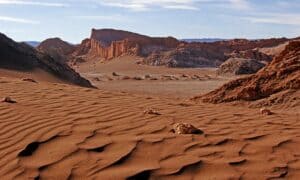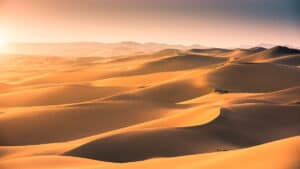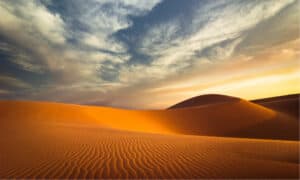When most people contemplate taking a break from work or bonding with family, vibrant cities and beautiful Hawaiian beaches are the first things that pop into their minds. But have you ever envisioned journeying across the Kyzylkum Desert one of the world’s most magnificent arid areas?
Reminiscent of the resilient traders who pioneered the Silk Road and braved the harshest conditions to cross it, the Kyzylkum Desert is famous for its host of valuable resources, such as gold, natural gas, oil, silver, and aluminum. Moreover, this geographical gem has everything modern-day travelers need to keep up their adventurous lifestyles. If you’re one of them, we’ve written this piece just for you.
Keep reading to arm yourself with handy information about the Kyzylkum Desert, including its weather, wildlife, and the various fun opportunities it presents.
How Large is the Kyzylkum Desert?
Occupying roughly 115,000 square miles, the Kyzylkum Desert is our planet’s 15th-largest desert. In Asia alone, it holds the 5th spot on the list of the continent’s largest deserts, spanning more area than countries like Ireland and South Korea.
One of the deserts larger than the Kyzylkum Desert in Asia is the Arabian Desert, which covers 899,618 square miles. Other deserts include the Gobi Desert (500,000 square miles) and Turkmenistan’s Karakum Desert, which sits on about 140,000 square miles.
Where is Kyzylkum Desert Located?
The Kyzylkum Desert is between the Syr Darya and Amu Darya rivers in Central Asia’s Transoxania. A massive chunk of this desert is flat and shrubby, with vast stretches of sand. Its name is derived from this aspect as it translates into “Red Sand” in Turkic languages.
The Kyzylkum Desert’s northwest part has wide areas with large takirs (sun-scorched spots with cracked clay soil). The territory also boasts a handful of sandy hillocks, oases, and rivers with irrigated agricultural settlements along them.
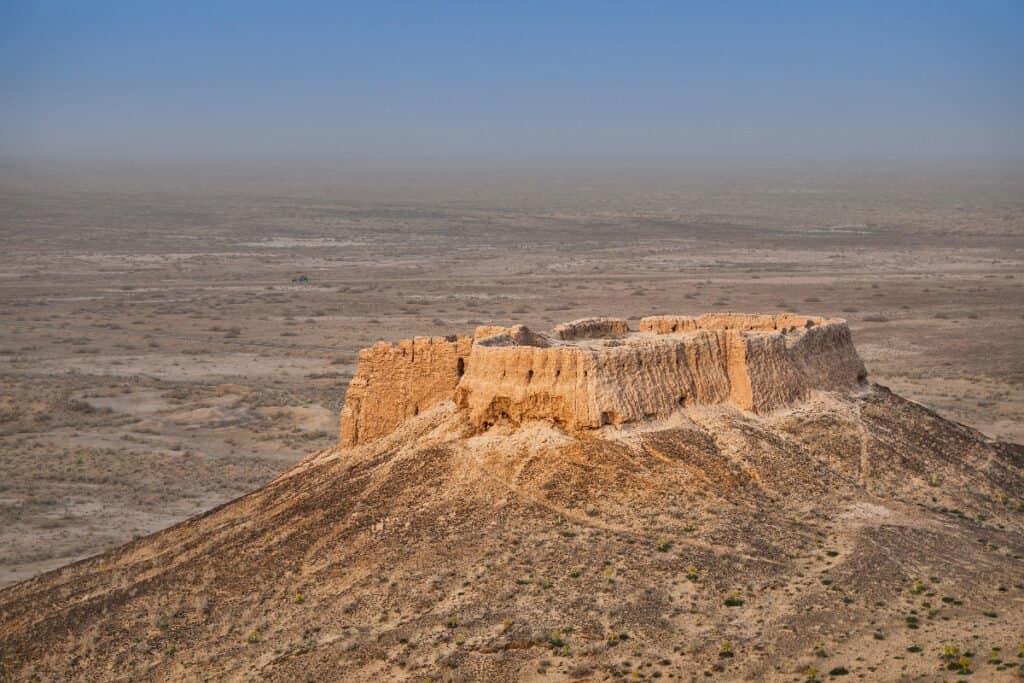
The beautiful and vast Kyzylkum Desert in Uzbekistan.
©Sergey Dzyuba/Shutterstock.com
Kyzylkum Desert: Average Annual Rainfall, Wettest and Driest Month
The Kyzylkum Desert receives about 100-200 mm of precipitation annually. While the wettest month is March, August is the driest, only receiving little to no rain. More often than not, it rains in the winter and spring in the Kyzylkum Desert. During hot weather, the Janadarya River dries up, leaving the region void of any watercourse. Fortunately, however, there are many oases to provide residents and animals with water.
Kyzylkum Desert: Hottest, Coldest, and Average Temperatures
The Kyzylkum Desert boasts a continental climate, so it experiences sharply varying temperatures in different seasons. Summer comes with intense heat, with average temperatures ranging from 79 to 84 degrees Fahrenheit in July. In the winter, usually in January, the temperatures can drop to between 32 and 16 degrees Fahrenheit.
Which Animals Live in the Kyzylkum Desert?
These animals call the Kyzylkum Desert home:
1. Karakul Sheep
A decent population of Karakul sheep roams the Kyzylkum Desert. The domestic species are known for their amazing benefits — they provide milk, pelts, wool, and meat. Since they’re fat-tailed, the latter has a distinctive mild flavor that slants more towards venison than mutton.
Karakul sheep are hardy animals with a remarkable capability to withstand harsh conditions; no wonder they thrive in the Kyzylkum Desert. They’re resistant to footrot and internal parasites, allowing them to survive longer. Another of the species’ unique traits is they boast a dominant black gene that causes most of them to be born black.
Being desert animals, Karakul sheep store fat in their thick tails to prepare for lean times. Though native to Central Asia, they live in other parts of the globe, including the US.

A beautiful Karakul sheep takes in its surroundings.
©iStock.com/slowmotiongli
2. Przewalski’s Horses
Also known as Mongolian wild horses, these members of the family Equidae are another animal species you’ll encounter in the Kyzylkum Desert. They are heavy-set, with short legs, thick necks, and massive heads. Although the grazers lack a forelock, they boast an erect mane from which a dark strip moves along the backbone to the roughly 35 inch long fluffy tail.
Przewalski’s horses are perceived to be the world’s remaining wild horse breed. Decades ago, they lived in many parts of Europe. But unfortunately, habitat destruction and competition for resources with man and other animals forced them to go east in Asia. So today, you’ll only find them in locations like the Kyzylkum Desert and other parts of Kazakhstan, China, and Mongolia.
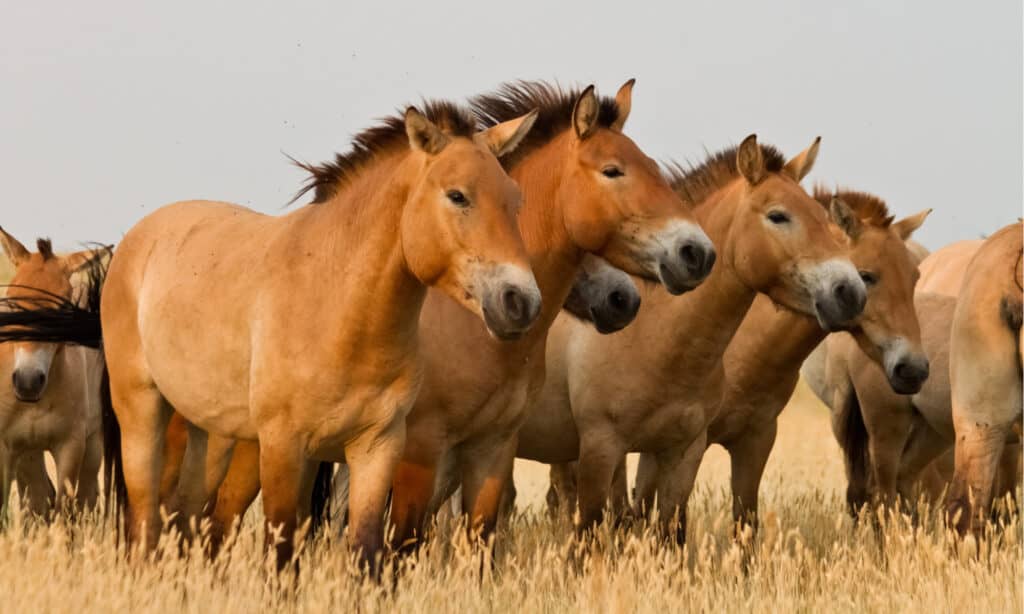
Przewalski’s horses are perceived to be the world’s remaining wild horse breed.
©Yantar/Shutterstock.com
3. Markhor
The markhor is impossible to miss with its grizzled light-brown coat and spiral horns. It’s native to Afghanistan, Turkmenistan, Tajikistan, and Uzbekistan, explaining why its sightings are common in the Kyzylkum Desert. The Capra species mainly feeds on grasses, shrubs, and twigs in the dry region, and its diet remains the same when it inhabits forested areas in other parts of the world.
Here are a few more things you should know about the markhor:
- Its signature spiral horns can grow up to 5 feet in adult males.
- The species lives in herds of 50-100 goats.
- They mate during the winter when the males become more aggressive towards each other to score mates.
- There are multiple markhor subspecies, including Astor markhor and Kabul markhor.
- Hunting this previously endangered species is tricky, owing to the danger of pursuing them.
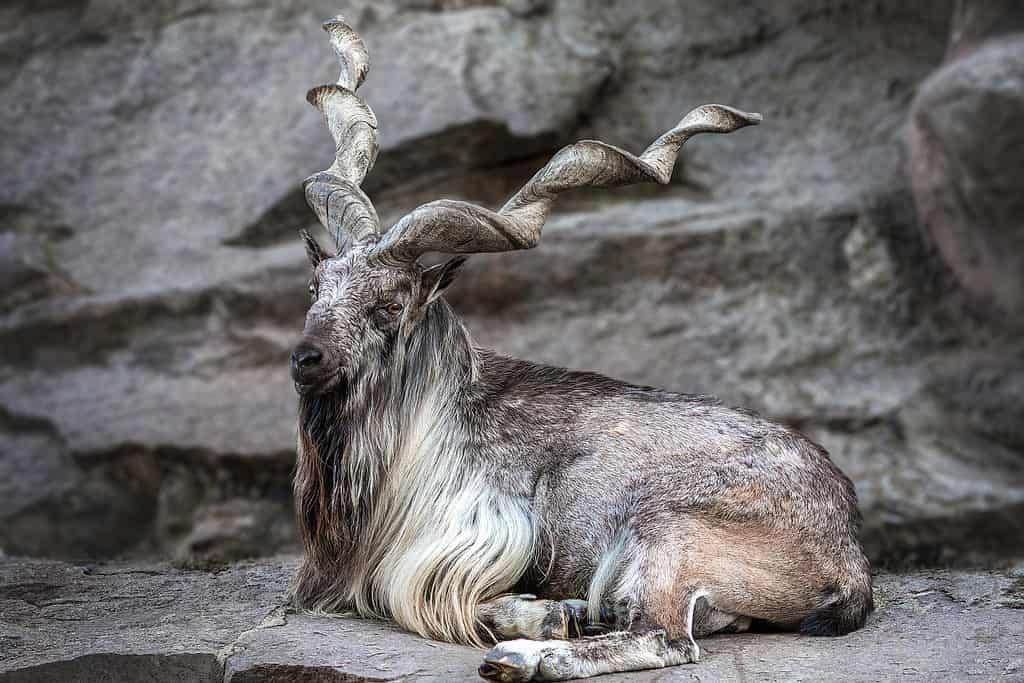
The markhor have signature spiral horns that can grow up to 5 feet in adult males.
©Armensl/Shutterstock.com
4. Saiga Antelope
Saiga is a small antelope species residing in the Kyzylkum Desert. Its distinguishing features include; a stooping body, a unique swollen nose, and a light buff coat that grows whiter and thicker during the winter.
Male saigas have been hunted for the longest time because of their valuable horns. Humans believe the projections have a cooling effect and treat imbalances like fever. Since Singapore has already legalized selling these parts, you can find them as whole horns or bottled drinks, shavings, and capsules on the market.
Sadly, Saiga species are now endangered; their global population has dropped by 95% within the past 15 years. Besides hunting, other things threaten them, including harsh winters, habitat destruction, predators like foxes, blockage of migratory routes, and wildfires.
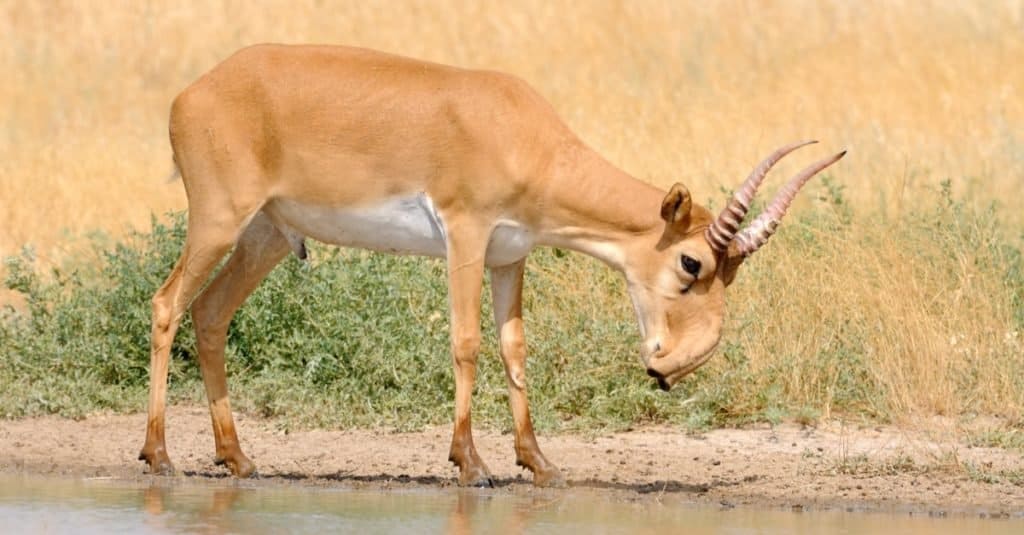
A
Saigaantelope
stands next to the watering hole in its natural grassland habitat.
©iStock.com/VictorTyakht
5. Gray Monitor Lizards / Butaans
Also referred to as the ornate monitor, the butaan inhabits the remote areas of the Kyzylkum Desert. This species can grow up to five feet, putting it in the pool of Asia’s largest lizards. People presumed it died out until the 1980s, when it was rediscovered.
The gray monitor lizard’s diet mainly comprises fruits. Because they have well-developed claws, they easily climb trees to forage for the latter. However, younger butaans also gladly munch on smaller animals like beetles, snails, and crabs. With their blunt teeth, crushing these creatures is always a breeze.
Many details about the gray monitor lizards’ reproduction habits are still unknown due to their secretive nature. But zoologists believe the females lay about eleven eggs between July and October.
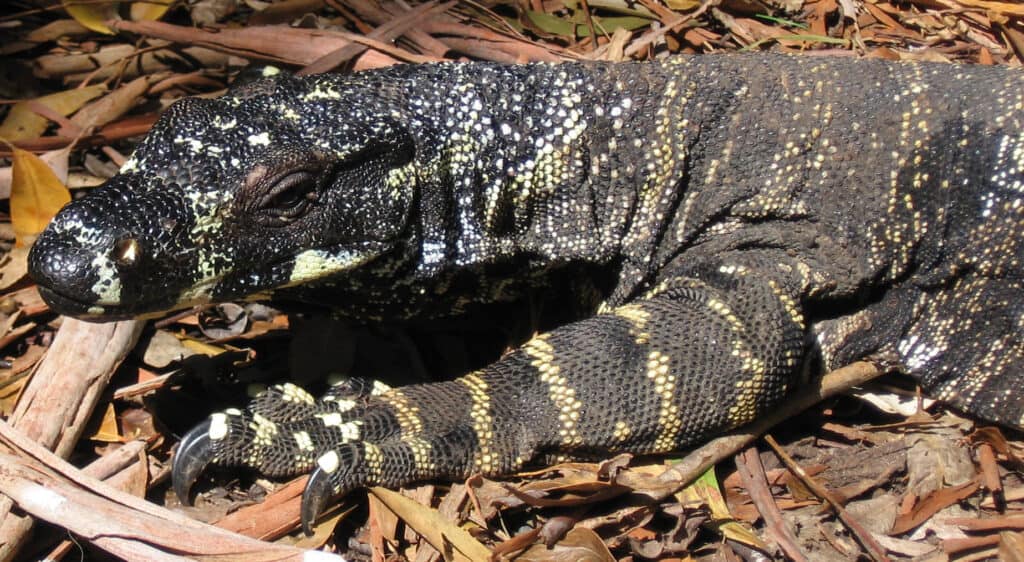
One of nature’s most unique creatures, the gray monitor lizard slowly makes its way across the dirt.
6. Russian Tortoise
The Afghan tortoise, also called the Russian tortoise, belongs to the family Testudinidae and is endemic to Central Asia. The species spends many hours in deep underground burrows in the Kyzylkum Desert, a habit that protects it from the harsh winter climate and helps it steer clear of predators, such as roadrunners and snakes.
You can easily identify a Russian tortoise by its coloration. Its rounded upper shell is reddish brown, or black, with a yellow shade between the scutes. These creatures have five toes, while most of their brothers and sisters have five.
Like the gray monitor lizards, Afghan tortoises are fond of fruits. But they also enjoy succulent and herbaceous vegetation like flowers, twigs, and grasses. These give them essential nutrients like calcium, low protein, and high fiber.
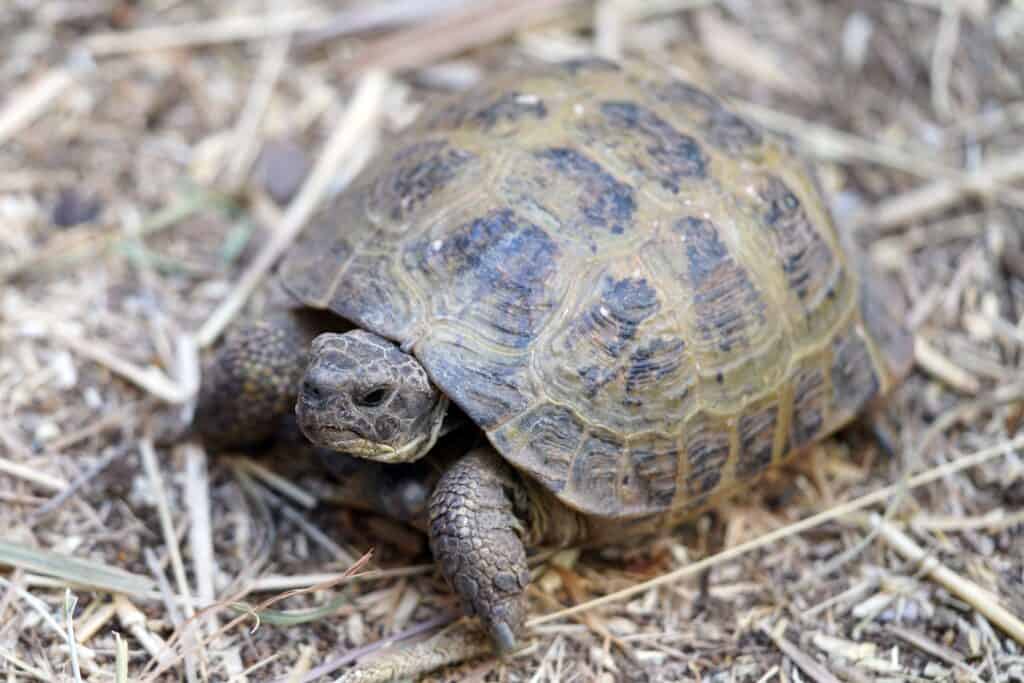
Russian tortoises have a domed shell and can grow up to 10 inches in length.
©Karen Dole/Shutterstock.com
7. Bactrian Deer
Being a Central Asian native, the Bactrian deer occupies a part of the massive Kyzylkum Desert. This animal is usually ashy-gray, with a grayish-white rump patch and yellowish sheen. You’ll also spot a white edge on its lips and chin. Although Bactrian deer lack neck manes, the males boast stronger, thicker neck muscles that make them look like they have one.
Bactrian deer are sociable animals. They typically hang out in herds and sometimes band together to explore the areas surrounding the desert during winter or at night to search for shelter and food. Speaking of which, their diet mainly contains grasses and other plants.
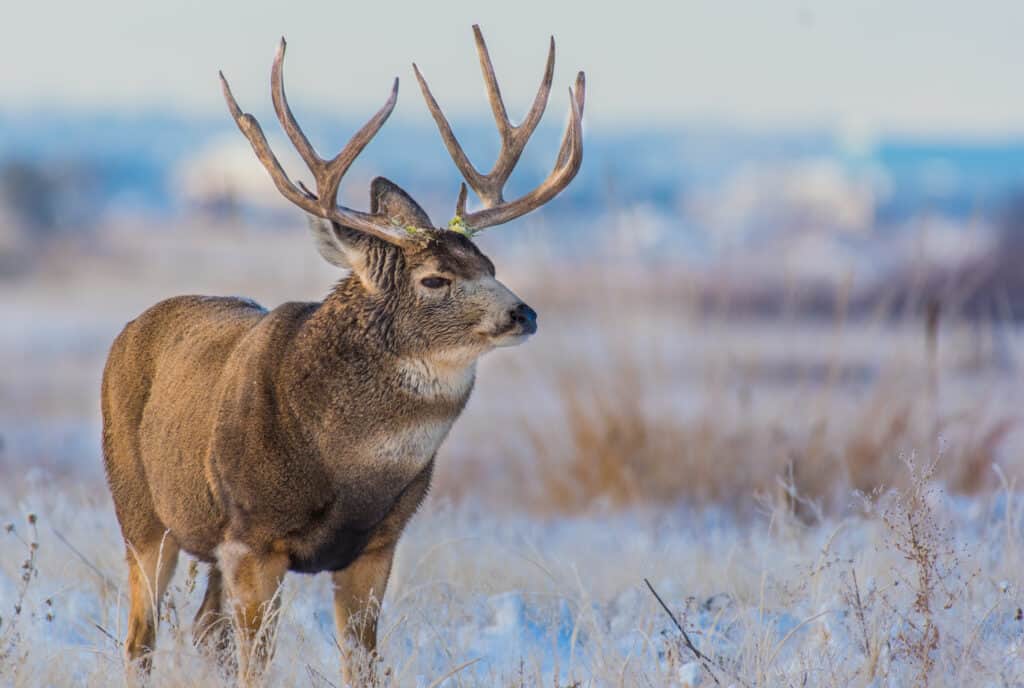
A Bactrian deer stands in the grasslands, a species of deer native to Central Asia.
©iStock.com/Kerry Hargrove
8. Golden Eagle
Your chances of spotting one or more golden eagles in the skies as you journey across the Kyzylkum Desert are high. These strong birds of prey boast a remarkable maximum speed of up to over 150 mph. Combined with their sharp talons, they can easily grab their prey that comprises of:
- Reptiles
- Birds
- Fish
- Ground squirrels
- Carrion
- Big Bugs
It’s also common to find golden eagles attacking mature deer. Unfortunately, this practice has gotten them on the wrong side of many misinformed farmers who think they can prey on their cattle. Plus, the fact that these birds also hunt down other larger animals, including goats, canines, and sheep, doesn’t help their case.
We recommend carrying a pair of binoculars to watch the golden eagles in the Kyzylkum Desert. A quality camera will also be handy if you plan to get some shots of this powerful bird.
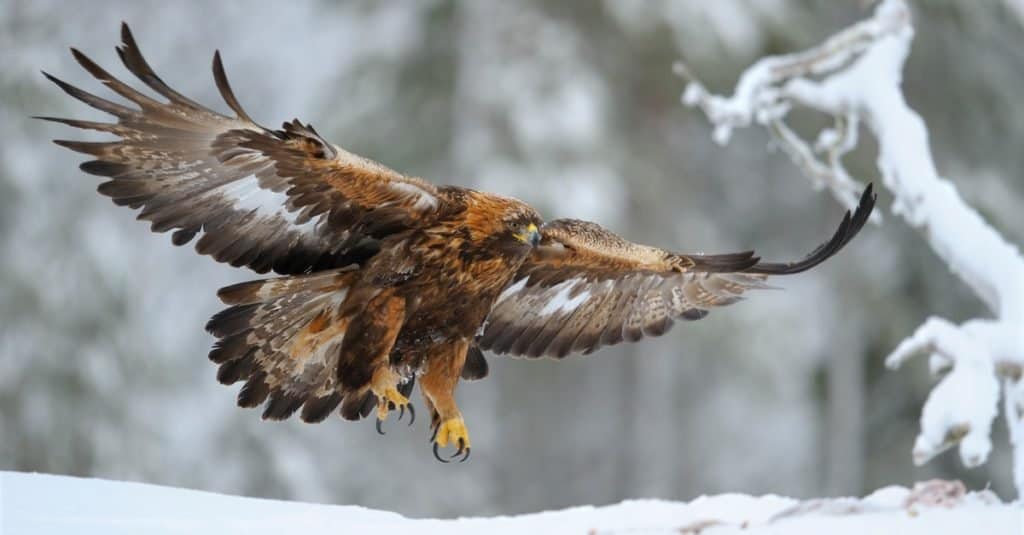
Golden eagles are powerful hunters that can spot their prey from up to two miles away.
©Vladimir Kogan Michael/Shutterstock.com
9. Sand Cat
Here’s the only cat that thrives in the unforgiving Kyzylkum Desert. At first glance, this native to Africa’s Sahara desert and some parts of Central Asia resembles the domestic cats we keep at home. However, if you look closer, you’ll notice it’s stockier. Also, the two species’ outer ears look similar, but the desert warrior’s ear canal is twice as large.
Nevertheless, sand cats are fierce hunters that feed on small rodents, birds, insects, and snakes like the venomous viper. These solitary animals are nocturnal and mainly hunt at night, skulking low to the sandy desert soil as they prepare to pounce on their prey. If they’re lucky to find more than enough for one meal, they bury carcasses in the ground to eat later.
Like many other desert creatures, sand cats in Central Asia are adapted to thrive in harsh conditions. During winter, their coats thicken to keep them warmer. Moreover, these felines don’t require water to survive; most even get moisture from their prey, an ability that keeps them comfortable when the intense summer heat hits their home.

A sand cat has distinctive tufted ears and a sand-colored coat that is perfectly adapted to its desert habitat.
©slowmotiongli/Shutterstock.com
10. Camels
Like the sand cats, camels have everything they need to prosper in the Kyzylkum Desert. For starters, these creatures have humps for nutrition. Contrary to popular belief, the protruded parts store fats instead of moisture, and they are converted into much-needed energy when the animals lack food and water for extended periods.
On top of that, camels barely sweat to beat the desert heat. Their elbows, feet, toes, and sternum also come with pads to enable them to lie in the hot sand without getting burned. Did you also know that these creatures’ eyelashes can grow up to two inches long to prevent dust from getting into their sensitive eyes?
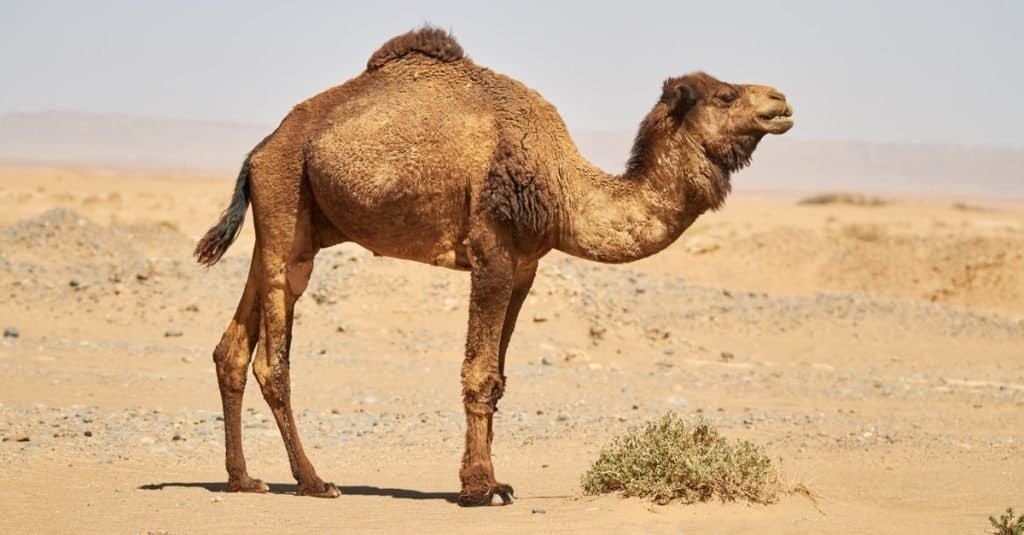
Camels are one of the strongest and hardiest animals in the world, able to survive in Kyzylkum Desert’s extreme climate.
©Photoestetica/Shutterstock.com
What to Do and See in Kyzylkum Desert
The Kyzylkum Desert is the perfect place for animal lovers. From fascinating deer, lizard, and cat species, to horses and sheep, you’ll have much to learn and see. Of course, you can ride the long-legged camels at your convenience.
But once you’re done having fun with the animals of this incredible desert, explore the fauna, which includes drought-resistant species like saxaul, sand sedge, ferrule, and camel thorn. Some types of Calligonum and Salsola richeri also call the sand areas of this arid universe home.
Something else you should do while at Kyzylkum Desert is tour the land. While there’s no harm in trekking a few miles, jeep, car, and bicycle tours are a more exciting way to discover what this expansive region holds. Make sure to arm yourself with the gear you need to stay safe and comfy, such as a long-sleeved breathable, loose-fitting shirt to protect you against sandstorms and help you retain sweat.
Discover Aydar Lake
Although a large portion of the Kyzylkum Desert is arid, it’s home to Aydar Lake, which covers 4,000 square kilometers and is among the world’s largest reservoirs. It hosts many fish species, such as pike perch, asp, chehon, sazan, catfish, and ophidian fish, making it the perfect locale for angling. Additionally, birders can marvel at the many birds occupying the lake’s shore, including pelicans, gulls, herons, and cormorants.
What is the Kyzylkum Desert Adjacent To?
The Kyzylkum Desert is next to the Karakum Desert, meaning “black sand” in Turkic languages. This arid region hosts various insects and arachnids, including dung beetles, ticks, spiders, and termites.
Other inhabitants of this desert include:
- Corsac fox
- Tolai hare
- Gophers
- Jerboas
- Desert sparrows
- Snakes
- Turtles
- Lizards
Traverse the Kyzylkum Desert
With these essential details up your sleeves, you now have a head start as you prepare to explore the expansive Kyzylkum Desert. Arrange your trip whenever you see fit, whether during the sizzling hot summers or cold winters. Either way, amid the distinctive red sand, you’ll have a wide range of thrilling endeavors based on your inclination or what you have on your bucket list.
Since hundreds of families inhabit the area around the Kyzylkum Desert, feel free to interact with them and learn a few things about their fascinating culture. We also recommend mastering a few Turkic terms before heading to this exciting destination. Sure, they’ll not be enough to communicate effectively. But they could come in handy sometimes, like when you want to greet the locals. Break a leg!
The photo featured at the top of this post is © iStock.com/font83
Thank you for reading! Have some feedback for us? Contact the AZ Animals editorial team.



